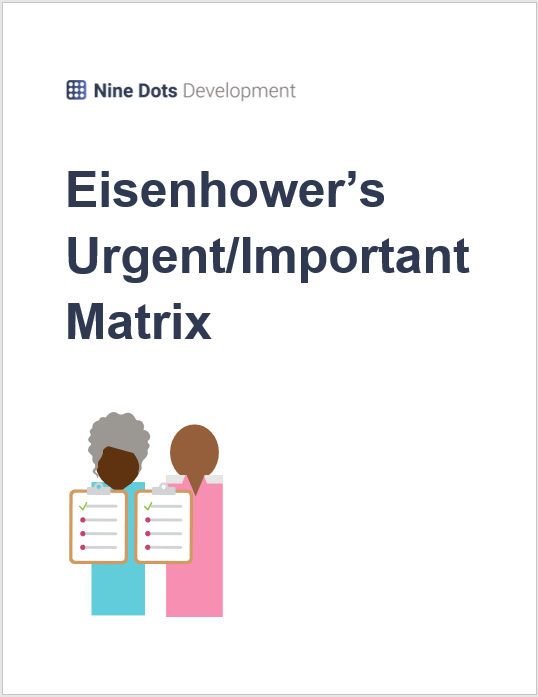Thursday 17 Jun 2021 Article
The TakeawayMaster Task Prioritisation with Eisenhower’s Urgent/Important Matrix
Setting Your Strategic Plans into Motion
Part 2 of 3
#StrategicPlans #Prioritisation #UrgentImportantMatrix #PersonalDevelopment
The perfectly matched resource for this article...
Download Our Free Guide to Eisenhower’s Urgent/Important Matrix!
Please click below to download our free guide to Eisenhower’s Urgent/Important Matrix!
Download our free guide!Playing catchup?
Master Task Prioritisation with Eisenhower’s Urgent/Important Matrix
A key part of staying on track with strategic plans is being able to correctly prioritise tasks.
Often, when we have too much to do in too little time, nothing actually gets finished. So how can Eisenhower’s Urgent/Important Matrix help you master task prioritisation?
Firstly, What is the Eisenhower Urgent/Important Matrix?
Eisenhower’s Urgent/Important Matrix, also known as Eisenhower’s Urgent/Important Principle, helps you rethink your priorities and determine which tasks actually matter and should therefore be done first.
In 1954, former US President Dwight D. Eisenhower quoted Dr Roscoe Miller (President of Northwestern University) and said “I have two kinds of problems: the urgent and the important.” Eisenhower said that was how he prioritised his workload; based on how important they were and how urgent they were. Over 3 decades later, Stephen Covey repackaged Eisenhower’s insights in his best-selling book ‘The 7 Habits of Highly Effective People’ and it became known as Eisenhower’s Urgent/Important Matrix – that was when this task prioritisation method really took off and started to gain popularity.
Why is Task Prioritisation So Crucial?
The success of strategic plans relies heavily on fantastic time management, meaning using time not only efficiently but effectively too. It’s essential that we overcome the natural tendency to focus on unimportant urgent activities to allow for more time to focus on what’s really important.
In essence, when done well, task prioritisation helps us move away from “firefighting” into a position where we can grow ourselves and our business.
So How Do I Use the Urgent/Important Matrix?
The Eisenhower Matrix classifies tasks according to two parameters; level of urgency and level of importance.
- Important tasks matter in the long run and contribute towards our goals
- Urgent tasks require immediate attention but don’t contribute to long term improvement and success
The matrix is broken up into four quadrants:
Quadrant One: Important and Urgent
Quadrant Two: Important but not Urgent
Quadrant Three: Not Important but Urgent
Quadrant Four: Not Important and not Urgent
All you need to do is:
- Create a list of all the activities and projects currently on your plate, no matter how small they may seem.
- Then, categorise each activity into one of the 4 quadrants listed above
- Finally, you can download our free ‘Eisenhower’s Urgent/Important Matrix Guide’ that shows you what to do with the tasks in each quadrant, gives you examples of what kinds of tasks should go in each quadrant, and includes a free matrix template.
You can download our ‘Eisenhower’s Urgent/Important Matrix Guide’ for free here.
---
In our next article, we will be looking at how you can upskill your employees to help set your strategic plans into motion and get the most out of your workforce.
Download Our Free Guide to Eisenhower’s Urgent/Important Matrix!
Please click below to download our free guide to Eisenhower’s Urgent/Important Matrix!
Download our free guide!Missed an article?
More from Setting Your Strategic Plans into Motion
